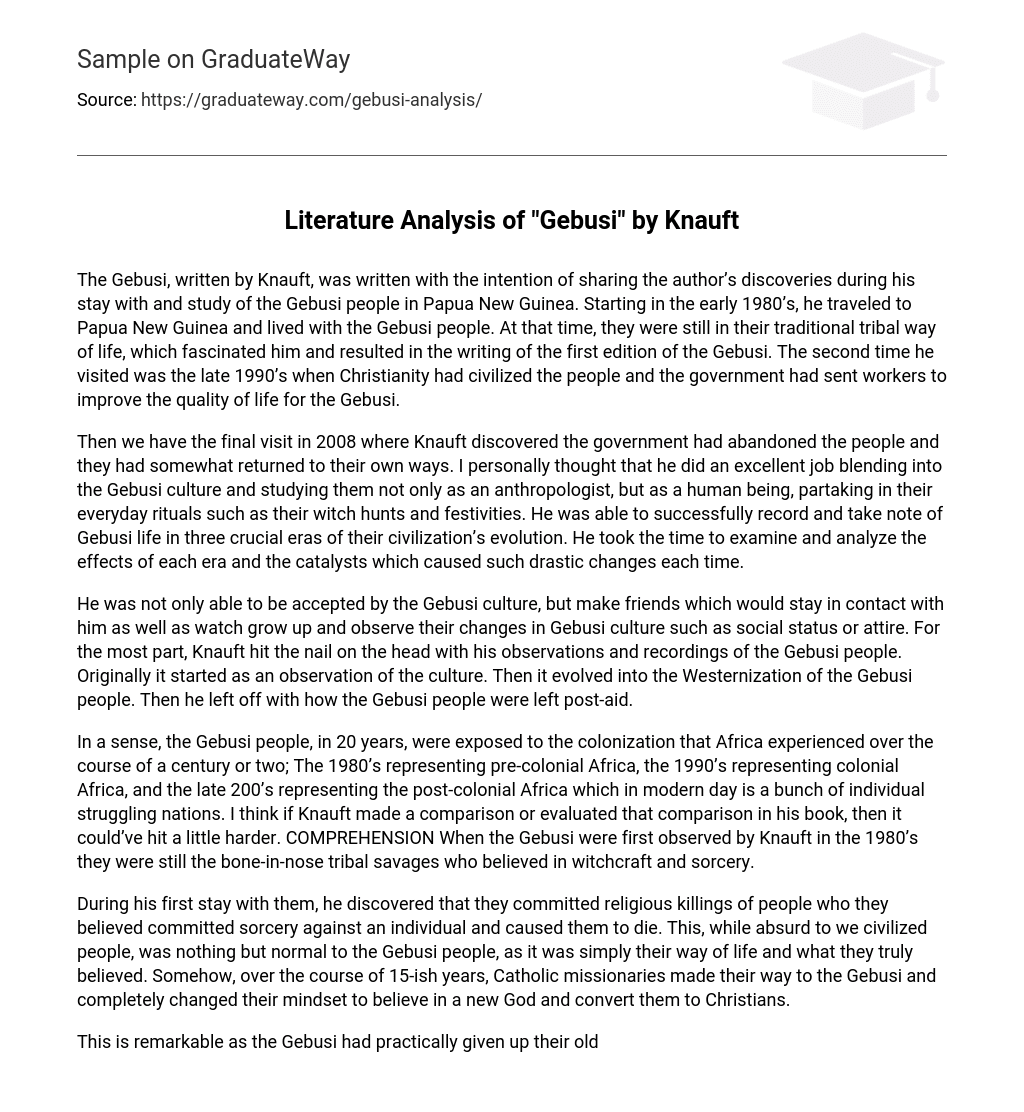The Gebusi, written by Knauft, was written with the intention of sharing the author’s discoveries during his stay with and study of the Gebusi people in Papua New Guinea. Starting in the early 1980’s, he traveled to Papua New Guinea and lived with the Gebusi people. At that time, they were still in their traditional tribal way of life, which fascinated him and resulted in the writing of the first edition of the Gebusi. The second time he visited was the late 1990’s when Christianity had civilized the people and the government had sent workers to improve the quality of life for the Gebusi.
Then we have the final visit in 2008 where Knauft discovered the government had abandoned the people and they had somewhat returned to their own ways. I personally thought that he did an excellent job blending into the Gebusi culture and studying them not only as an anthropologist, but as a human being, partaking in their everyday rituals such as their witch hunts and festivities. He was able to successfully record and take note of Gebusi life in three crucial eras of their civilization’s evolution. He took the time to examine and analyze the effects of each era and the catalysts which caused such drastic changes each time.
He was not only able to be accepted by the Gebusi culture, but make friends which would stay in contact with him as well as watch grow up and observe their changes in Gebusi culture such as social status or attire. For the most part, Knauft hit the nail on the head with his observations and recordings of the Gebusi people. Originally it started as an observation of the culture. Then it evolved into the Westernization of the Gebusi people. Then he left off with how the Gebusi people were left post-aid.
In a sense, the Gebusi people, in 20 years, were exposed to the colonization that Africa experienced over the course of a century or two; The 1980’s representing pre-colonial Africa, the 1990’s representing colonial Africa, and the late 200’s representing the post-colonial Africa which in modern day is a bunch of individual struggling nations. I think if Knauft made a comparison or evaluated that comparison in his book, then it could’ve hit a little harder. COMPREHENSION When the Gebusi were first observed by Knauft in the 1980’s they were still the bone-in-nose tribal savages who believed in witchcraft and sorcery.
During his first stay with them, he discovered that they committed religious killings of people who they believed committed sorcery against an individual and caused them to die. This, while absurd to we civilized people, was nothing but normal to the Gebusi people, as it was simply their way of life and what they truly believed. Somehow, over the course of 15-ish years, Catholic missionaries made their way to the Gebusi and completely changed their mindset to believe in a new God and convert them to Christians.
This is remarkable as the Gebusi had practically given up their old ways for this new God. They not only adopted this new religion, but abandoned their old ways and dove right in to the new Christian culture. Though it wasn’t a literal overnight change, 10 to 15 years is a remarkable amount of time still to change an entire people and their way of life. It also showed the true nature of man and that though they were violent savages at first, were truly altruistic in their hearts, as the killings literally reduced to zero after the adoption of Christianity.
Yet as the Government workers and missionaries left, their faith died a little, but their civility stayed for the most part. They did revert back to their tribal ways somewhat, but mainly in a satirical fashion and for cultural keepsake. All in all, religion practically saved the Gebusi people from staying in their archaic and savage state, and in turn helping them become civilized, but also left them completely on their own when the church and government left. For now, the Gebusi have themselves for sustenance again, and who knows where they’ll be?





